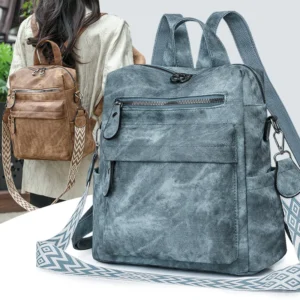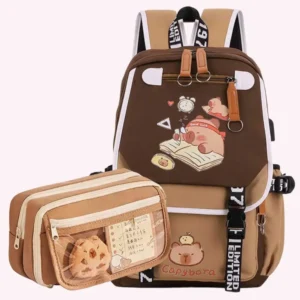Introduction: The Timeless Transformation of Full-Grain Leather
There’s something almost magical about watching a piece of full-grain leather transform over time. Unlike most materials that simply wear out, full-grain leather—the highest quality leather available that retains the outermost layer of the hide—actually improves with age, developing what leather enthusiasts reverently call “patina.”
Patina is more than just wear; it’s a desirable evolution that enhances leather’s beauty. This natural aging process creates a unique surface character that tells the story of the leather’s journey with you. The subtle darkening of color, the gradual softening of the material, and the development of a natural sheen all contribute to what makes aged full-grain leather so coveted among collectors and everyday users alike.
Unlike synthetic materials or lower-quality leathers that deteriorate and require replacement, properly maintained full-grain leather transforms into something more valuable and beautiful than when it was new. The differences between full-grain and top-grain leather become most apparent during this aging process, with full-grain’s superior aging capabilities standing out dramatically.
In this exploration of leather’s evolution, we’ll examine the physical changes full-grain leather undergoes, the factors that influence this aging process, and why this transformation sets full-grain leather apart from all other materials. Whether you’re considering your first leather purchase or are already a leather enthusiast, understanding the art of patina will help you appreciate the living nature of this remarkable material.
What Makes Full-Grain Leather Unique Among Leather Types
Full-grain leather stands at the pinnacle of leather quality, distinguished by its completeness and integrity. Unlike other leather types, full-grain preserves the entire outermost layer of the animal hide—the part with the tightest fiber structure and greatest strength.
What truly sets full-grain leather apart:
Natural character marks: The surface retains all the natural markings, including small scars, wrinkles, and growth lines that tell the story of the animal’s life. These aren’t flaws but authenticating features.
Intact fiber structure: The unaltered grain contains the most densely packed fibers in the hide, creating unmatched durability and tear resistance.
Natural breathing ability: Full-grain leather maintains its original pore structure, allowing it to absorb and release moisture, which contributes significantly to its aging characteristics.
Visible grain pattern: Each piece displays unique grain patterns—like fingerprints—that become more pronounced as the leather ages.
These distinctive properties create the foundation for true patina development. When examining the various grades of leather, you’ll notice that as more processing occurs, the leather loses its ability to develop this authentic character.
The natural oils and unaltered surface of full-grain leather allow it to respond to environmental factors in a way that creates beauty rather than deterioration. This is why full-grain leather backpacks continue to improve aesthetically year after year while maintaining their structural integrity—a quality that manufactured or heavily processed leathers simply cannot replicate.
The Science Behind Patina: Understanding Leather’s Transformation
Patina isn’t simply a superficial change—it’s the result of complex chemical and physical interactions occurring within the leather itself. Understanding this science helps explain why full-grain leather ages so beautifully rather than deteriorating.
At its core, patina development involves oxidation—the same process that causes metals like copper to develop a green coating over time. In leather, oxidation creates subtle color changes as the natural compounds in the material interact with oxygen in the air. This process happens gradually, creating depth and richness rather than degradation.
Simultaneously, the leather’s natural oils redistribute through daily handling and exposure to environmental conditions. These oils migrate from within the fibers to the surface and back again, conditioning the leather from the inside out. The tannins used in the leather-making process also continue to mature, often darkening slightly and contributing to color depth.
What makes full-grain leather unique is that these chemical changes enhance its structural properties rather than compromising them. The durability of full-grain leather in backpacks actually increases through this aging process as the fibers become more supple while maintaining their strength.
The microscopic changes happening within the leather create visible transformations that leather enthusiasts prize. Unlike synthetic materials that break down at the molecular level when exposed to similar conditions, full-grain leather’s natural structure allows it to incorporate these changes as improvements, creating a living material that continues to evolve in response to its environment.
Color Evolution: The Deepening and Enriching of Tones
One of the most striking aspects of leather patina is the remarkable transformation in color that occurs over time. This evolution isn’t simply a darkening—it’s a sophisticated deepening and enriching of tones that adds visual complexity and character.
Light-colored leathers undergo the most dramatic transformation. A natural tan leather might begin with a pale, almost blonde appearance but gradually develop warm honey and amber tones. With years of use, these can deepen into rich caramel and cognac hues with golden highlights that simply don’t exist in new leather.
Darker leathers evolve more subtly but just as beautifully. Deep brown leather often develops reddish or burgundy undertones that create dimension. Black leather can develop a complex depth with subtle blue or gray highlights along frequently handled areas.
What makes this color transformation so appealing is its non-uniform nature. High-touch areas like handles, edges, and corners typically develop darker, richer coloring first, creating natural gradients across the surface. This variation adds visual interest and tells the story of how the item has been used.
UV exposure plays a significant role in this color development process, gently accelerating oxidation in areas exposed to sunlight. Additionally, the natural oils from your hands contribute to color saturation in frequently touched areas. Proper maintenance of leather backpacks can help ensure this color evolution happens evenly and beautifully rather than resulting in dry, cracked surfaces.
Unlike artificial dyes or stains that can look flat or uniform, the patina’s color changes create a three-dimensional quality that makes aged leather appear to have depth beyond its surface—a living canvas that continues to evolve through its lifetime.
Texture Transformation: From Stiff to Supple
New full-grain leather typically has a certain stiffness or firmness—a quality that some first-time leather owners might initially find challenging. However, this apparent drawback is actually the beginning of one of leather’s most appealing transformations: the evolution from rigid to remarkably supple.
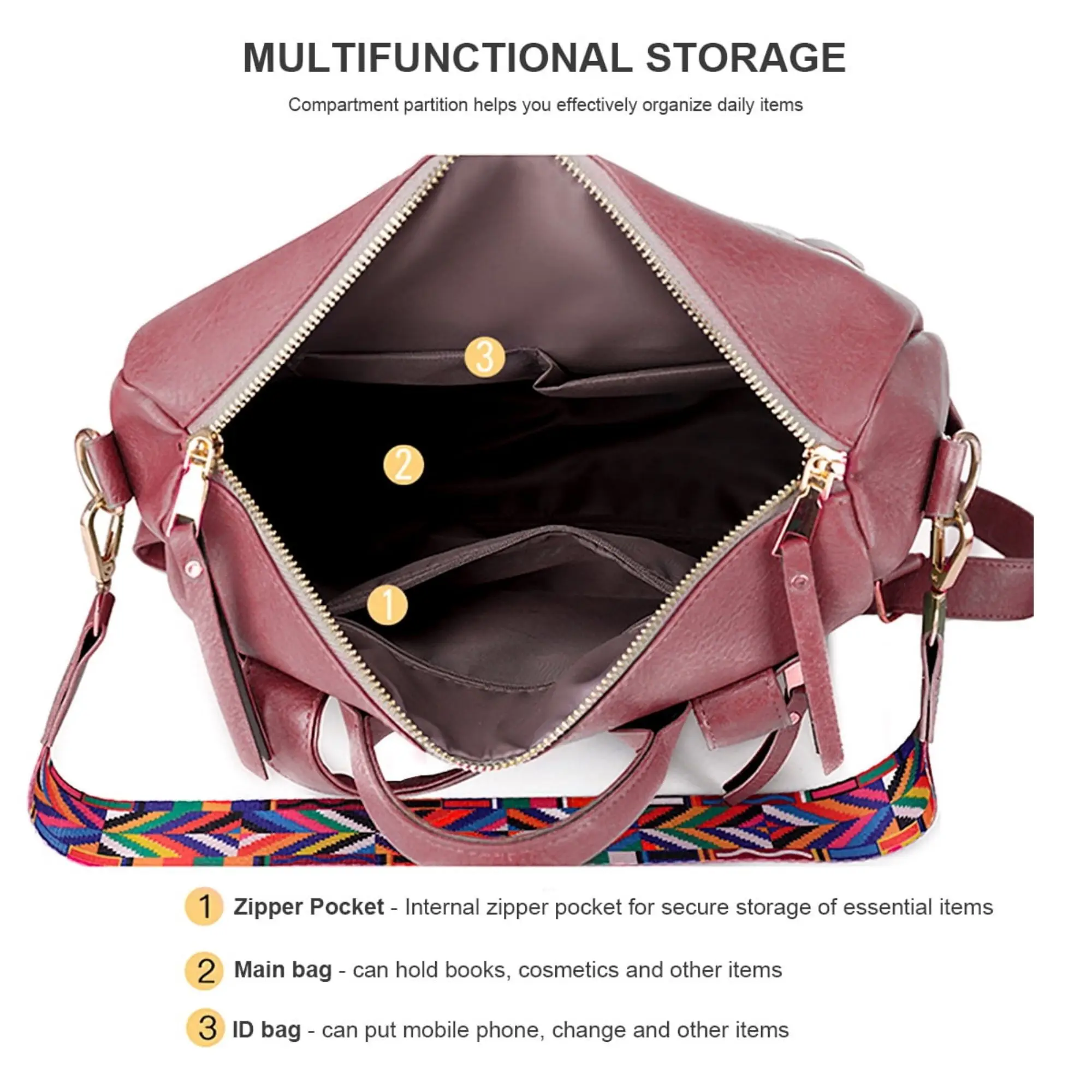
As full-grain leather is handled and flexed through normal use, its internal fiber structure gradually relaxes without losing strength. The tightly packed collagen fibers begin to become more flexible, allowing the leather to bend and fold with increasing ease. This process creates a material that molds itself to the user’s habits and body.
The physical transformation is most evident in items like:
* Backpack straps that conform perfectly to shoulder contours
* Wallet edges that develop a gentle curve matching the pocket they’re carried in
* Bag handles that create subtle finger indentations where they’re regularly gripped
Unlike other materials that simply weaken over time, the suppleness of well-aged vintage leather backpacks represents increased functionality without sacrificing durability. The leather becomes more comfortable to use while maintaining its structural integrity.
This transition from stiff to supple is particularly satisfying because it’s uniquely personalized. The leather adapts specifically to your handling patterns, creating an item that feels custom-made over time. The leather literally learns your habits, developing character that reflects your specific use.
Importantly, this beneficial softening differs dramatically from the harmful weakening seen in lower-quality materials. Full-grain leather becomes more flexible without becoming structurally compromised—its fibers relax rather than break, creating a material that remains strong even as it becomes increasingly comfortable to use.
The Development of Natural Sheen: The Burnishing Effect
One of the most admired characteristics of aged full-grain leather is the subtle, natural sheen that develops over time—a quality distinctly different from the artificial gloss of treated leathers. This natural luster, known as burnishing, creates a warm glow that seems to emanate from within the leather rather than sitting on its surface.
Burnishing develops through a combination of friction and the natural interaction between the leather’s fibers and oils. Areas that receive regular contact—edges of wallets, bag handles, strap surfaces—gradually develop a polished appearance as tiny fibers on the leather surface align and compress through repeated handling.
This natural polishing effect is most noticeable along edges and creases where the leather folds regularly. The pressure and movement in these areas compress the leather fibers and redistribute natural oils, creating a surface that reflects light differently than unworn portions.
What makes this natural sheen so appealing is that unlike artificial polishes or coatings, burnished areas aren’t simply shiny—they develop a complex luster that highlights the leather’s grain pattern rather than hiding it. The burnishing effect actually enhances the visibility of the natural texture while adding a sophisticated gleam.
Perhaps most importantly, this burnishing process actually strengthens the leather surface by compressing and densifying the fibers. Frequently handled areas become more resistant to water and staining as the compressed fibers create a naturally more protective surface. This means that the most touched areas of your leather goods often become the most beautiful and durable—a remarkable quality that few other materials can claim.
Character Development: How Marks and Scratches Become Part of the Story
In our perfection-obsessed world, the way full-grain leather incorporates marks and scratches might seem counterintuitive at first. Rather than being permanently damaged by minor scuffs and scratches, quality full-grain leather actually integrates these marks into its developing character, creating depth and personality where other materials would simply show damage.
When a new scratch occurs on full-grain leather, it typically appears lighter than the surrounding material—a sharp contrast that might initially cause concern. However, as the leather ages, these marks gradually blend into the overall patina. Natural oils redistribute, edges of the mark soften, and what began as a distinct blemish transforms into an integrated element of the leather’s unique character.
This healing ability comes from full-grain leather’s intact natural structure. The open pores absorb oils and moisture, while the dense fiber network allows the material to recover from minor impacts. Over time, scratches that once stood out eventually become subtle elements in a complex tapestry of character marks.
Of course, this unique quality must be balanced against practical considerations. While some may appreciate how full-grain leather can show these marks, understanding the difference between character-building marks and actual damage is important. A light scratch enhances character; a deep gouge that compromises structural integrity is different.
What makes this aspect of aging so meaningful is how it creates a historical record of the item’s journey with you. That scratch from an unexpected branch while hiking, the subtle creasing pattern from how you always place your wallet in the same pocket, the slight color variation where your hand regularly grips your bag—these aren’t imperfections but documentation of your shared experiences, making the leather item uniquely yours in a way that factory-perfect materials can never achieve.
Key Factors Influencing Patina Development
The development of beautiful patina isn’t simply a matter of time—it’s influenced by a complex interplay of factors that affect how quickly and beautifully your leather ages. Understanding these influences helps you better appreciate and potentially guide your leather’s unique aging journey.
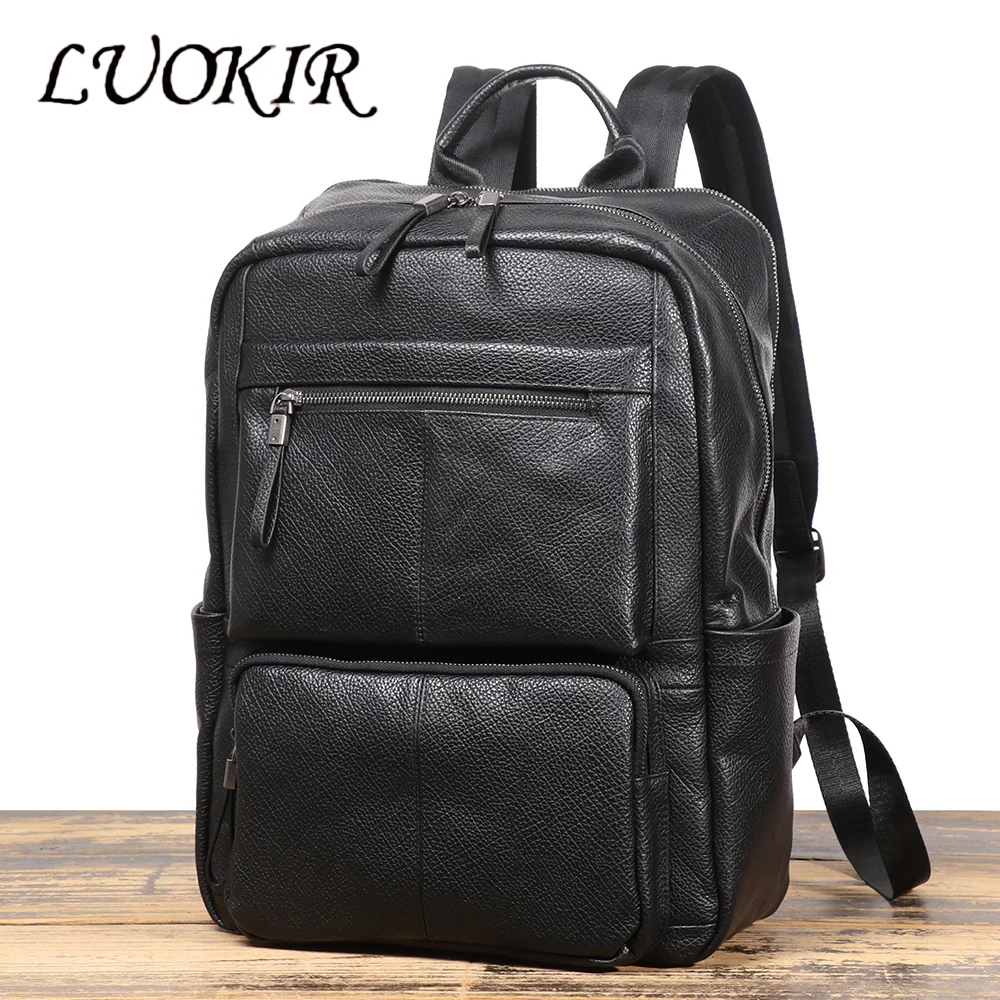
Usage Frequency and Type:
* Daily-used items develop patina faster than occasionally used pieces
* How you handle the leather impacts pattern development—areas frequently touched by hands show accelerated aging
* Constant flexing (as in a wallet) creates different character than occasional use (as in luggage)
Environmental Exposure:
* Sunlight exposure accelerates color development but requires balance to prevent overdrying
* Humidity levels affect how leather absorbs and releases moisture
* Air quality influences oxidation rates—urban environments may create different patina than rural settings
Natural Oils and Conditioning:
* Oils from your skin significantly influence patina development in high-touch areas
* Understanding how oil affects leather’s waterproofing properties helps maintain proper balance
* Regular conditioning supports healthy aging rather than preventing it
Climate and Storage:
* Dry climates may require more frequent conditioning to prevent cracking
* Humid environments need proper air circulation to prevent unwanted moisture absorption
* Temperature fluctuations can accelerate certain aspects of aging
Tanning Methods:
* Vegetable-tanned leather typically develops richer patina than chrome-tanned alternatives
* Different tannages react differently to environmental factors
* Some tanning methods specifically enhance patina development
These factors work together to create the unique character of each leather item. Leather backpacks used daily in varied environments will develop distinct personalities compared to those stored carefully and used occasionally. By understanding these influences, you can better appreciate the natural evolution of your full-grain leather goods and potentially guide their aging process toward your preferred outcome.
Full-Grain vs. Other Leathers: A Comparison of Aging Characteristics
Not all leather ages equally. The dramatic difference in aging properties between full-grain and other leather types explains why leather enthusiasts are willing to invest significantly more in full-grain products. Understanding these differences helps clarify why genuine patina is exclusive to higher-quality leathers.
Full-Grain Leather: Develops true patina with color deepening, increasing suppleness, and an attractive natural sheen. Scratches and marks blend into the overall character, enhancing rather than detracting from appearance. Becomes more beautiful and develops uniqueness over time.
Top-Grain Leather: The second-highest quality leather still develops some patina, but since the surface has been sanded and refinished, the character development is less pronounced and often less consistent. The buffed surface limits how well oils can penetrate and move through the leather. The durability differences between leather types become increasingly apparent as they age.
Genuine Leather: Despite its name suggesting authenticity, genuine leather is a lower grade made from split leather with applied finish. Rather than developing beautiful patina, it typically shows uneven wear, cracking, and peeling of the applied surface treatments. The artificial finish prevents natural oil absorption and distribution.
Bonded Leather: Composed of ground leather scraps held together with adhesives and covered with a printed surface layer, bonded leather doesn’t age—it deteriorates. The surface often cracks and peels, revealing the composite material beneath. No true patina is possible.
Synthetic/Vegan Leather: These materials don’t develop patina but instead show wear through color loss, cracking, or peeling. Unlike full-grain leather where age adds value, most synthetic options lose aesthetic appeal as they age.
The confusion between these types is common, especially since marketing terms can be misleading. Understanding that 100% leather isn’t necessarily full-grain helps consumers make informed choices about the aging potential of their leather goods.
What truly distinguishes full-grain leather is its intact natural structure—complete with all the elements needed for genuine patina development. The unaltered grain layer contains the dense fiber network, natural oils, and original surface characteristics that enable true character development. When this structure is compromised through sanding, splitting, or artificial finishing, the leather loses much of its ability to age gracefully.
The Enduring Benefits of Aged Full-Grain Leather
As full-grain leather ages, it doesn’t just maintain its usefulness—it develops a range of benefits that make it increasingly valuable over time. These advantages explain why well-aged leather items are often treasured possessions passed between generations.
Aesthetic Benefits
The visual appeal of aged full-grain leather is unmatched. The depth and complexity of coloring, the subtle variations in texture, and the natural sheen that develops creates an appearance that can’t be artificially replicated. Each piece becomes visually unique, with patterns of wear and color development that reflect its individual journey.
Performance Enhancements
Unlike most materials that weaken with age, properly maintained full-grain leather often improves functionally. The increased suppleness makes items more comfortable to use while maintaining structural integrity. This combination of flexibility and strength is particularly valuable in long-lasting leather commuter bags that must withstand daily use while conforming comfortably to the body.
Emotional Connection
Perhaps the most significant benefit is the emotional value that develops. As your leather item ages with you, recording your experiences in its changing appearance, it becomes more than a possession—it becomes a companion with sentimental significance. This emotional connection creates an attachment that disposable goods can never achieve.
Investment Value
While not all leather items appreciate financially, well-maintained full-grain leather often retains value remarkably well. Some heritage pieces even increase in worth over time—a stark contrast to most consumer goods that rapidly depreciate after purchase.
Environmental Advantages
In our era of increasing environmental awareness, the longevity of full-grain leather represents a sustainable approach to consumption. A quality men’s leather backpack might last decades or even generations with proper care, significantly reducing the environmental impact compared to purchasing multiple replacement items made from less durable materials.
These combined benefits explain why those familiar with quality leather often view the aging process not as deterioration but as enhancement—a living material that improves rather than degrades with the passing of time.
Caring for Your Full-Grain Leather to Enhance Patina Development
Proper leather care isn’t about preventing aging—it’s about supporting the natural aging process to ensure your leather develops beautiful patina rather than suffering damage. The right approach maintains leather’s structural integrity while allowing character to develop.
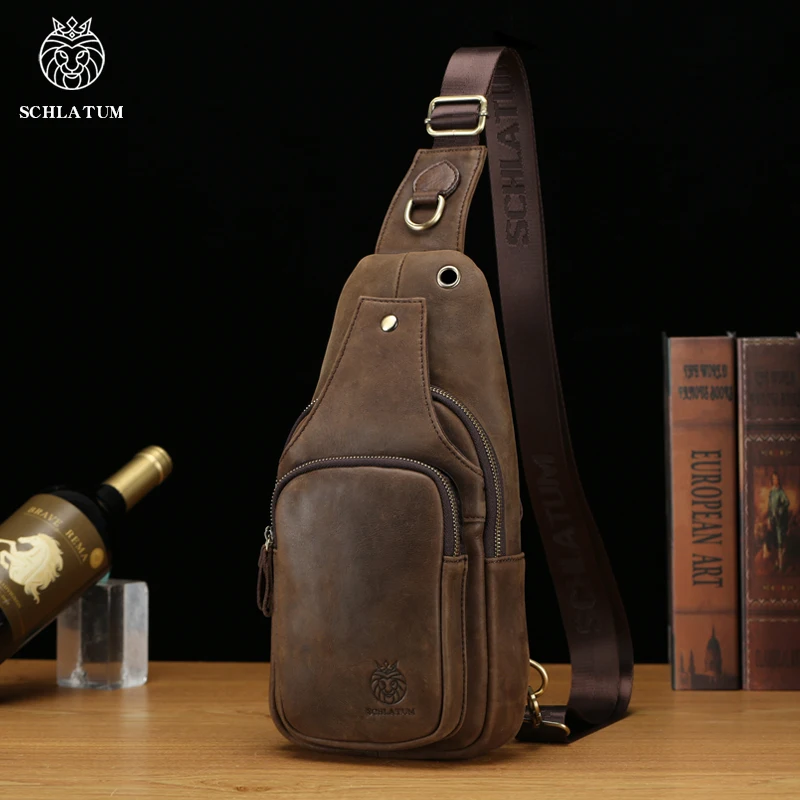
Cleaning Techniques:
* Regularly remove surface dust with a soft, dry cloth
* For minor stains, gently wipe with a slightly damp cloth
* Avoid harsh soaps or chemicals that can strip natural oils
* Allow any dampness to air dry naturally away from direct heat
Conditioning Approach:
* Apply appropriate leather conditioner when leather feels dry
* Use small amounts rubbed in thoroughly with clean fingers or soft cloth
* Understand that leather needs time to dry properly after conditioning for best absorption
* Focus conditioning on areas that flex frequently or appear drier
Protection Without Prevention:
* Consider occasional use of light leather protectant, especially in harsh environments
* Apply protectants sparingly to maintain leather’s breathing ability
* Remember that some exposure to elements contributes to character development
Storage Recommendations:
* Store leather items in breathable containers rather than plastic
* Maintain moderate humidity and temperature
* Avoid prolonged direct sunlight when not in use
* Use proper support to prevent unwanted creasing or shape distortion
The right care regimen enhances rather than prevents the aging process. Quality brown leather backpacks that receive appropriate care develop deeper, richer patina than neglected items, which might simply appear worn or damaged. The goal is supporting the leather’s natural properties while protecting against excessive stress.
14 Inch Leather Laptop Backpack, Brown Leather Backpack, Men's Leather Backpack, Vintage Leather Backpack
Price range: $177.28 through $199.12 Select options This product has multiple variants. The options may be chosen on the product pageCarry On Leather Backpack, Roll Top Leather Backpack
Price range: $77.76 through $96.48 Select options This product has multiple variants. The options may be chosen on the product pageDesigner Mini Backpack, Mini Leather Backpack, Small Leather Sling Backpack, Women's Leather Backpack
Price range: $95.76 through $98.80 Select options This product has multiple variants. The options may be chosen on the product pageDesigner Mini Backpack, Designer Women's Backpack, Mini Leather Backpack, Women's Leather Backpack
Price range: $135.92 through $137.64 Select options This product has multiple variants. The options may be chosen on the product pageBlack Leather Backpack, Small Leather Backpack, Women's Leather Backpack
Price range: $112.96 through $116.12 Select options This product has multiple variants. The options may be chosen on the product page- Price range: $80.72 through $108.04 Select options This product has multiple variants. The options may be chosen on the product page
Remember that different leathers may require slightly different care approaches based on their tanning method and finish. Generally, vegetable-tanned full-grain leather develops the most pronounced patina and benefits from regular but moderate conditioning to support this natural process.
Embracing the Journey: How to Appreciate Your Leather’s Evolution
Developing an eye for leather patina is similar to developing a palate for fine wine—it enhances your appreciation of subtle changes and transforms waiting into part of the pleasure. Rather than focusing solely on the end result, leather enthusiasts learn to value each stage of the aging journey.
The first signs of patina typically appear within months of regular use. You’ll notice slight darkening in areas frequently touched by your hands, a gentle softening of edges, and perhaps the beginnings of a subtle sheen developing along creases. These early changes might seem minor but represent the beginning of your leather’s transformation.
By the one-year mark, more pronounced character development emerges. Color variations become more noticeable, the overall flexibility increases significantly, and the contrast between frequently used and less-handled areas creates a natural gradient that tells the story of how you use the item.
After several years, the transformation becomes dramatic. What began as a relatively uniform material now displays complex color variations, a distinctive texture pattern unique to your usage habits, and a rich luster that only comes with time. The leather feels substantially different—often softer while maintaining structure—and carries the physical record of your shared experiences.
Many leather enthusiasts document this transformation through photographs, taking images when an item is new and then at regular intervals. This visual record makes the subtle daily changes more apparent and allows you to appreciate the gradual evolution that might otherwise go unnoticed.
Perhaps most importantly, understanding patina development changes your relationship with imperfections. Rather than seeing a new scratch as damage to be repaired, you recognize it as the beginning of character development—another element in the unique story your leather item is creating with you. This perspective transforms consumption into curation, turning an object into an evolving companion.
The Story in Your Hands: Why Patina Makes Full-Grain Leather Timeless
In a world dominated by disposable products and planned obsolescence, full-grain leather stands apart as a material that genuinely improves with age. This quality creates a fundamentally different relationship between owner and object—one based on evolution rather than eventual replacement.
The patina that develops in quality leather represents a counterpoint to modern consumer culture. Instead of deteriorating, full-grain leather absorbs experiences and transforms them into character. Rather than hiding signs of age, it showcases them as badges of honor and authenticity. This natural process creates items that become increasingly personalized reflections of their owners’ lives.
Understanding the distinction between aging and deterioration is crucial. Lower-quality materials simply wear out—they crack, tear, fade, and eventually require replacement. Full-grain leather evolves—it deepens in color, develops complex surface character, becomes more supple, and creates a historical record of its journey with you.
This living quality connects full-grain leather to traditional craftsmanship values that prioritize longevity, quality, and meaningful connection with everyday objects. When you choose full-grain leather, you’re not just selecting a material but embracing a philosophy that values patience, development, and the beauty that comes only with time.
At Summit Carry, we focus on creating leather goods that serve as canvases for this remarkable aging process. Each full-grain leather piece begins its journey with you as a quality foundation, ready to record your experiences through its gradually developing patina. The result isn’t just a used item but a uniquely personal possession that becomes more distinctly yours with every passing day.
In an age of digital ephemerality, there’s profound satisfaction in owning something tangible that improves rather than degrades—something that doesn’t just witness your journey but actually records it in its very essence.
Common Questions About Full-Grain Leather Aging
Is patina just another word for wear and tear?
No. While both involve changes over time, wear and tear describes deterioration and damage, while patina refers to beneficial aging that enhances appearance and character. Patina adds value and beauty; wear and tear reduces functionality and appearance.
How long does it take to develop a rich patina?
A noticeable patina begins developing within 3-6 months of regular use. More significant character develops over 1-2 years, while truly rich, complex patina continues developing over many years or even decades. The exact timeline depends on usage frequency, environmental conditions, and the specific leather type.
Can I speed up the patina process?
While there are ethical ways to encourage patina development—such as regular handling, occasional sun exposure, and proper conditioning—artificial methods often create unnatural results. The most beautiful patina comes from genuine use and patience rather than shortcuts.
Will water damage ruin the patina?
Brief exposure to water shouldn’t harm quality full-grain leather if properly dried afterward. However, prolonged soaking or improper drying can cause water spots or damage. Minor water spots often blend into the overall patina over time, while severe water damage may require professional restoration.
Does patina development mean my leather needs conditioning?
Not necessarily. Color darkening and increasing suppleness are natural aspects of patina, not signs of dryness. However, if the leather feels stiff or appears excessively dry with a whitish cast, conditioning may be appropriate. Over-conditioning can actually interfere with beautiful patina development.
Do all leather colors develop patina equally?
No. Lighter colors like tan and natural vegetable-tanned leather typically show the most dramatic patina development. Darker browns show more subtle changes but still develop character. Black leather shows the least obvious color change but still develops texture and sheen differences.






